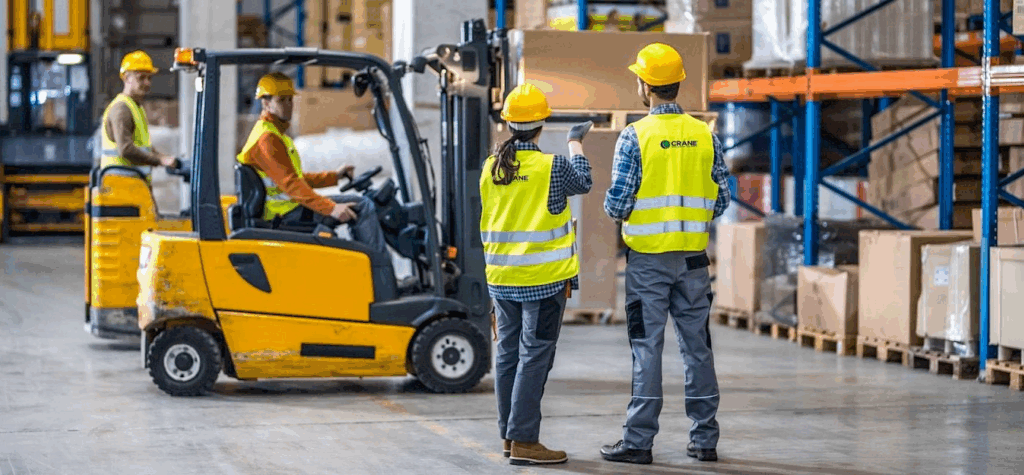How to Choose the Right Global Logistics Track Platform for SMEs
A Global Logistics Track Platform is no longer a nice-to-have tool for small and medium-sized enterprises (SMEs). It has become a necessity in global trade. Customers expect transparency, real-time updates, and reliable delivery information. SMEs that fail to meet these expectations risk losing sales and reputation. Selecting the right platform can feel overwhelming because many providers are offering different features. With the right approach, SMEs can find a solution that matches their size, budget, and growth ambitions.

Why SMEs Need a Global Logistics Track Platform
Rising Customer Expectations
Customers demand quick answers about their shipments. “Where is my order?” is the most common question faced by SMEs in cross-border trade. A reliable global Logistics track platform allows SMEs to give accurate updates instantly, improving customer trust and reducing service workload.
Increasing Complexity in Global Trade
SMEs are no longer limited to one or two carriers. Many use multiple shipping partners depending on region and cost. Managing these carriers without a centralized platform is messy. A Global Logistics Track Platform simplifies this by integrating carriers into one dashboard.
Competitive Advantage
Large corporations already use advanced tracking platforms. SMEs that adopt the same level of visibility can compete on equal terms. This levels the playing field and allows smaller companies to attract more international customers.
Key Features SMEs Should Look For
Real-Time Shipment Visibility
The most important feature is real-time tracking. A good platform collects live data from multiple carriers and updates the customer-facing system immediately. SMEs should avoid solutions that only refresh once or twice a day. Customers expect updates every step of the journey.
Multi-Carrier Integration
SMEs often ship through different carriers such as DHL, UPS, FedEx, and regional postal services. A strong Global Logistics Track Platform connects all these providers in one place. This saves time and ensures that SMEs do not have to log into multiple carrier websites.
Branded Tracking Pages
Generic tracking links reduce customer engagement. A platform that allows branded tracking pages keeps customers connected with the SME’s brand. It also provides opportunities to upsell, cross-sell, or promote future discounts while the customer checks shipment status.
Predictive Delivery Estimates

Delays are common in global logistics. A good global logistics track platform uses AI or historical data to predict delays before they happen. Predictive ETAs (Estimated Time of Arrival) help SMEs manage customer expectations and reduce complaints.
Alerts and Notifications
Customers prefer proactive updates rather than repeatedly checking tracking pages. A reliable platform offers automated notifications via email or SMS. SMEs can configure these alerts for key milestones like “shipped,” “in transit,” “out for delivery,” and “delivered.”
Return and Reverse Logistics Management
Cross-border returns are complex. A platform that manages reverse logistics simplifies the process. It provides SMEs with return labels, tracking for returned items, and better visibility on refund timelines.
Evaluating Costs and ROI
Affordable Pricing Models
SMEs must balance features with affordability. Some platforms charge per shipment, while others offer flat monthly fees. SMEs should calculate expected order volumes before committing to a plan. A per-shipment model may suit very small businesses, while a flat fee might be better for growing companies.
Long-Term Value
Cost should not be the only factor. The right Global Logistics Track Platform reduces customer service calls, improves satisfaction, and increases repeat sales. SMEs should consider the long-term return on investment rather than the cheapest option.
Free Trials and Pilot Programs
Many providers offer trial periods. SMEs should take advantage of these to test functionality. Running a pilot project with a smaller set of shipments helps confirm whether the platform fits the business.
Security and Compliance

Data Protection
Customer shipment data is sensitive. SMEs must ensure that the platform follows international security standards such as GDPR compliance. Strong encryption and secure data storage protect both customers and businesses.
Customs and Documentation Support
Global trade often requires customs documents. Some platforms help generate and manage these automatically. This reduces delays at borders and prevents costly mistakes.
Ease of Use and Integration
Simple User Interface
SMEs do not always have large IT teams. The platform should be easy to navigate for employees with minimal training. A complicated interface increases errors and slows down operations.
API and E-Commerce Integration
The best platforms integrate directly with popular e-commerce systems such as Shopify and WooCommerce. They also offer APIs to connect with internal order management systems. This creates smooth workflows and reduces manual data entry.
Scalability and Flexibility
Growing with the Business
An SME may start small but grow quickly. The platform should support higher shipment volumes without losing speed or accuracy. It should also offer advanced features that can be unlocked later as the business expands.
Flexible Carrier Options
The platform must allow SMEs to add new carriers as they grow into new regions. Locking into one carrier or region limits business opportunities.
Customer Support and Reliability

Availability of Support Teams
SMEs need fast assistance when issues arise. A good provider offers 24/7 support channels, whether through chat, phone, or email. Reliable support ensures that problems do not disrupt customer service.
Service Level Agreements (SLAs)
Before signing up, SMEs should check the provider’s SLAs. These outline uptime guarantees and response times. A platform with poor uptime damages trust with customers.
Steps to Choose the Right Platform
Step 1: Define Business Needs
SMEs should first list their key priorities. Is real-time tracking most important? Or is cost reduction the main focus? A clear understanding of needs prevents confusion when comparing platforms.
Step 2: Research and Shortlist Providers
Read case studies, reviews, and industry reports. Shortlist 3–5 providers that match the SME’s requirements.
Step 3: Test Features with a Trial
Do not rely only on sales presentations. Test the platform with real shipments. Measure ease of use, speed of updates, and integration quality.
Step 4: Compare Pricing Structures
Evaluate whether the platform’s pricing matches shipment volume and growth plans. Check for hidden fees like SMS notifications or international carrier connections.
Step 5: Review Customer Support
Contact the provider’s support team during the trial. Test how quickly they respond. This gives a clear idea of what to expect after signing a contract.
Common Mistakes SMEs Should Avoid

Choosing the Cheapest Option Only
Low cost often means fewer features or poor support. SMEs should balance affordability with reliability.
Ignoring Future Growth
A platform that works today may not handle tomorrow’s volume. Always check scalability before committing.
Skipping Security Checks
Data leaks can destroy customer trust. SMEs must confirm that the provider follows strict security and compliance standards.
The Future of Global Logistics Track Platforms
AI and Predictive Analytics
Platforms are moving beyond basic tracking. AI helps predict delays, suggest alternative routes, and improve customer communication.
IoT and Smart Devices
Integration with IoT sensors offers live updates on temperature, humidity, and package condition. This is vital for sensitive goods such as food or medicine.
Sustainability Integration
Green logistics is becoming a priority. Some platforms now track carbon emissions and help SMEs choose eco-friendly delivery options.
Conclusion
A Global Logistics Track Platform gives SMEs the tools to compete in international trade. It improves visibility, reduces service pressure, and builds customer trust. The right choice depends on clear priorities, cost evaluation, and long-term goals. SMEs that take time to research, test, and select the right platform will see stronger customer loyalty and faster growth in cross-border commerce.
Industry Insights
news via inbox
Nulla turp dis cursus. Integer liberos euismod pretium faucibua








